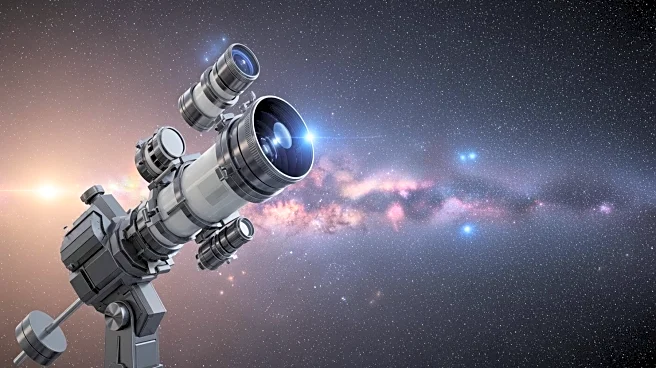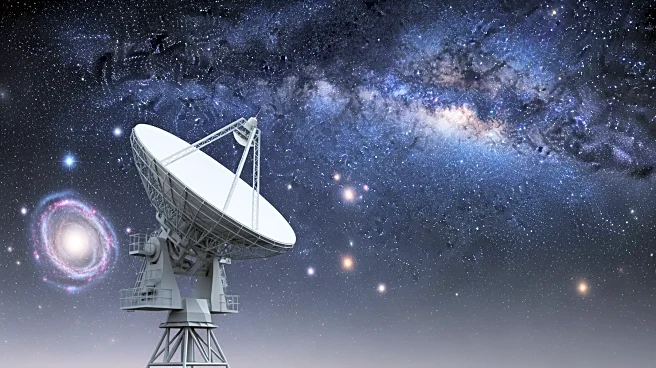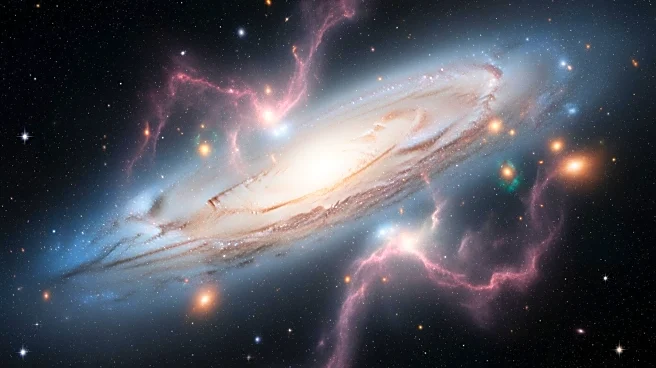What's Happening?
Astronomers have revealed that the Pleiades star cluster, traditionally known for its 'Seven Sisters,' contains approximately 20 times more stars than previously identified. This discovery was made using
data from NASA's Transiting Exoplanet Survey Satellite (TESS) and the European Space Agency's Gaia spacecraft. The research team from UNC-Chapel Hill utilized these tools to measure the rotational speeds of stars, which can indicate familial relationships and ages. The findings suggest that many stars near the sun are part of larger stellar families, challenging previous perceptions of the Pleiades as merely a small group of bright stars. This revelation has implications for understanding young star systems and the cultural significance of the Pleiades, which have been referenced throughout history.
Why It's Important?
The discovery of additional stars within the Pleiades cluster has significant implications for the study of star systems and the broader understanding of our galaxy's structure. By identifying these hidden stellar relationships, scientists can gain insights into the formation and evolution of star clusters, including the origins of our own solar system. This research opens new avenues for exploring the architecture of the Milky Way and could lead to a deeper understanding of cosmic history. The cultural impact is also noteworthy, as the Pleiades have been a part of human storytelling and mythology across various civilizations.
What's Next?
The research team plans to continue using rotational measurements to uncover more hidden stellar families. This approach could redefine how astronomers map star clusters and trace the origins of stars, including our sun. Future studies may focus on identifying other star clusters with similar hidden structures, potentially reshaping our understanding of the galaxy's formation. The findings may also prompt further exploration into the cultural narratives associated with the Pleiades, enriching the historical context of this astronomical body.
Beyond the Headlines
The discovery highlights the potential for advanced astronomical techniques to reveal previously unseen aspects of the universe. It underscores the importance of collaboration between international space agencies and academic institutions in advancing scientific knowledge. The cultural dimension of the Pleiades, as a symbol in various historical texts, adds a layer of human connection to the scientific findings, illustrating the intersection of science and culture.











